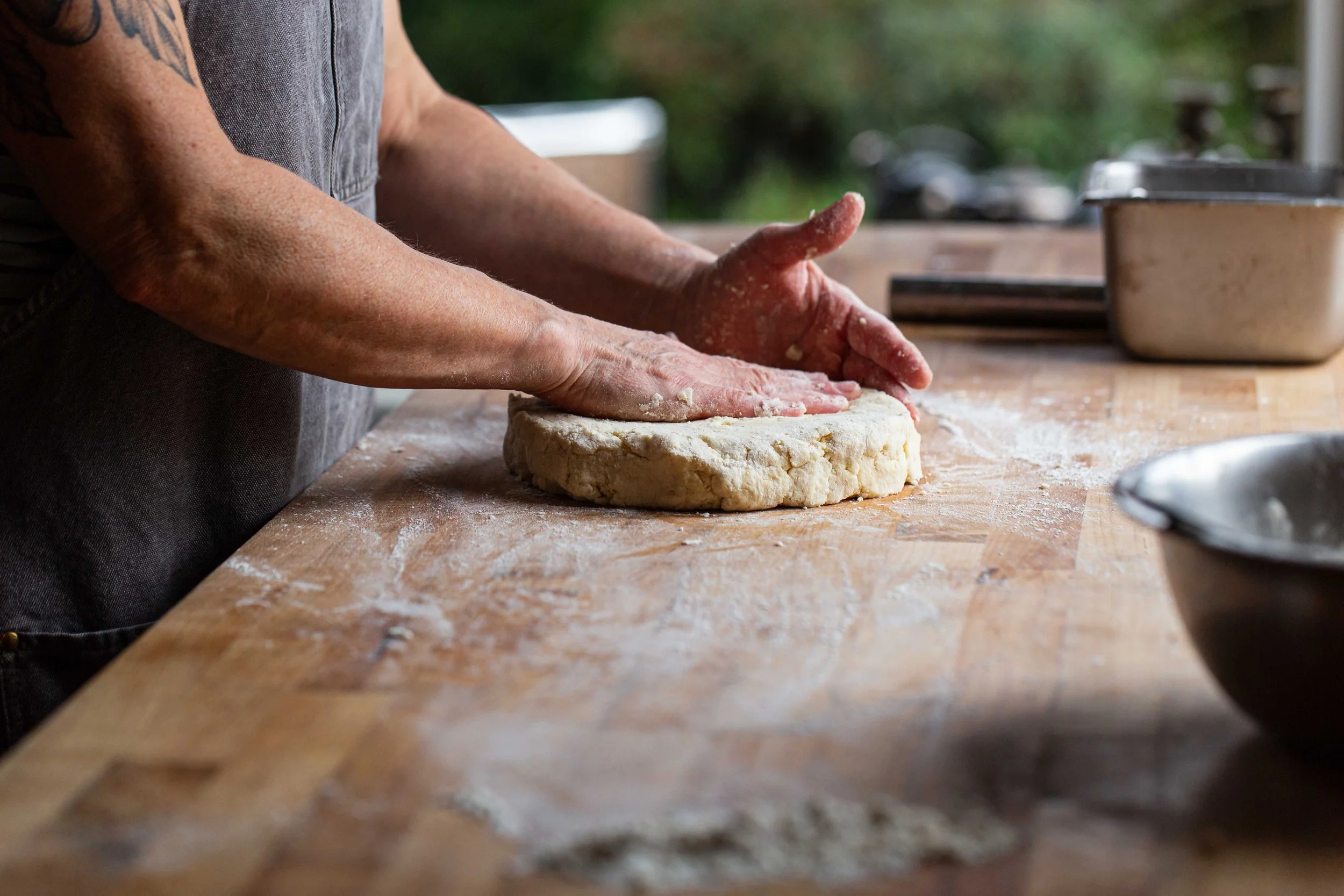The Photography Assets Every Restaurant Needs
Seattle Area Restaurant Photography for Heyday Farm: Chef Tad adds final garnish to his dessert.
Whether you’re running a coffee shop, a bakery, a food truck, or a full-service restaurant, photography is one of the most powerful tools in your marketing toolkit. It’s not just about making food look good…it’s about showing your audience what to expect, highlighting the care and craft behind every dish, and creating a visual brand.
If you’re investing in photography, there are several types of images you should consider to build a versatile, high-impact library that works year-round:
1. Menu Photography
We call these the “work horses” or “money makers”. Menu photography is the “practical demonstration” for your audience. These images show exactly what they’ll get when they place an order in person or online. Done right, it increases sales, reduces confusion, and builds trust.
Consistency is key: Use the same camera angles, lighting, and backdrops across all menu items so that the only thing changing is the food itself. This keeps the menu clear and visually appealing.
Practicality matters: Your photos should reflect what the dish actually looks like. Customers should be able to recognize the portion, plating, and ingredients when their order arrives.
Food trucks & high-traffic areas: Especially if you’re in a lot with multiple vendors, having images on your menu can literally make the difference between selling out or sitting empty.
Stand out on 3rd party ordering apps: It’s been proven time and time again… professional menu photography helps you stand out on online ordering platforms like toast and the like. People associate the quality of the photography with the quality of the food.
2. Hero Images
Hero images are the “wow” shots…the photos that stop someone mid-scroll. These highlight your food at its best: perfect plating, gorgeous lighting, and angles that show off texture and color.
Versatility: It’s best to have the same hero image horizontally for your website and vertically for social media posts or stories. This lets you maximize the impact of a single shot across all your channels.
Attention-grabbing: Hero images should evoke emotion and appetite. They’re not just pretty, they make people want what they see.
3. Lifestyle & Human Element Shots
People connect with people. Adding hands, chefs in action, or even guests enjoying your food adds context and life to your brand.
Interior shots: Show what it feels like to be in your space. Highlight atmosphere, seating, and lighting to set the vibe.
Action & process: Capture chefs plating, dough being kneaded, or cocktails being poured. These details tell the story behind your food and showcase quality and care.
Staff features: Headshots, action shots, or candid moments give your brand personality and put a face to your story. (Check out this example of lifestyle and process shots at Hey Day Farm Restaurant in Bainbridge Island Wa. )
4. Exterior & Interior Photography
Your location sets the tone. Exterior shots help people find you and give a sense of place, while interior images test the tone for how it feels to be in the space.
5. Building a Versatile Asset Library
The goal is to have a collection of images that can serve multiple purposes: menus, websites, social media, email marketing, and press. Evergreen assets—those that aren’t tied to a specific season—are the baseline. Once you have those, you’re ready to layer on seasonal content, updates, and campaign-specific imagery. Check out this example from Miss Pho in Seattle, Washington.
Why This Matters
A well-curated library of menu, hero, lifestyle, staff, and exterior images gives you the flexibility to:
Keep your marketing channels fresh
Build trust with your audience
Highlight the quality and thoughtfulness behind your offerings
Drive sales and engagement without relying solely on text or promotions
Once your evergreen content is in place, it’s the perfect foundation for seasonal photography highlighting holiday menus, local ingredients, or limited-time specials. I’ll cover that in detail in the next article.
Bottom Line:
Investing in professional photography isn’t just for big brands. Every restaurant, bakery, coffee shop, or food truck can benefit from images that are consistent, high-quality, and versatile. By starting with menu photography, hero shots, lifestyle images, staff features, and exterior context, you set your brand up for success—and make seasonal updates that much more impactful.

















